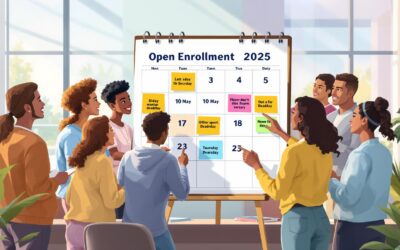Congress has passed the American Recovery and Reinvestment Act (“the Act”), and the Act has been signed by President Obama. This communication describes the provisions in the Act that affect COBRA continuation coverage and similar state continuation coverage.
Applicability and Effective Date
The COBRA changes affect both the federal COBRA provisions and the Public Health Service Act program that provides similar extension benefits for public programs. In addition, however, the subsidy provisions apply to state continuation coverage that is comparable to federal COBRA. That would include so-called “mini-COBRA” state laws that cover groups below the 20 employee threshold for COBRA. To be comparable, the state continuation law must allow the individual to continue substantially similar coverage as was provided under the group health plan at a monthly cost that is based on a specified percentage of the group health plan’s cost of providing such coverage. Reference to “COBRA” throughout this memo will also refer to the state programs that meet those requirements.
The Act is effective February 17, 2009, the day that President Obama signed the bill. All of the COBRA provisions that have a time frame will date from that day. As for calendar monthly billed programs, the effective date is March 1, 2009.
New Subsidy for COBRA Beneficiaries
The Act provides for a new subsidy for certain COBRA beneficiaries. The subsidy is 65% of the COBRA continuation coverage premiums for eligible individuals for up to 9 months. The COBRA beneficiary will pay only 35% of the overall COBRA premium for that period. The period expires on the earlier of (i) nine months, (ii) the date the individual becomes eligible for major medical group coverage or Medicare or (iii) the end of the maximum required period of continuation under COBRA. Further, the beneficiary must notify the employer in writing if they become eligible for coverage under a major medical group health plan or Medicare and is subject to significant penalties (110% of the subsidy amount) for failing to do so.
An individual who does not receive a subsidy that he/she believes appropriate may appeal the plan’s determination to the Department of Labor for private plans or to the Department of Health and Human Services for public plans covered under the Public Health Services Act. The relevant agency must rule on the appeal within 15 business days. Individuals whose appeal is denied may sue under ERISA.
Eligibility for the Subsidy – Timing
The subsidy is available to individuals (and their dependents) who were involuntarily terminated from their employment and became eligible for COBRA beginning September 1, 2008 through December 31, 2009. Persons who elected prior to the enactment of the Act (but on or after September 1, 2008) will be eligible to receive the subsidy prospectively from the date of enactment through the maximum nine-month period. Otherwise eligible persons who did not elect COBRA between September 1, 2008 and the date of enactment will have the opportunity to elect COBRA on a prospective basis with the maximum duration of the coverage dating from the date that they could have first elected COBRA. Employers or plans will have to provide notice to these groups of individuals. In addition, a group health plan or insurer must refund the individuals any COBRA premiums that subsidy-eligible persons paid on or after the date of enactment in excess of 35% of the premium. This may be in the form of a reimbursement payment or credit against future premium payments due.
Eligibility for the Subsidy – Income Test
The subsidy is adjusted based on income. Joint filers with $250,000 or more of modified adjusted gross income and all other filers with $125,000 or more of modified adjusted gross income are not eligible for the full subsidy. The subsidy is phased out completely for persons with modified adjusted gross incomes of $290,000 joint or $145,000 for other filers. The subsidy is not considered income as long as the beneficiary meets the income tests. Excess amounts of subsidy over the amount the person is entitled to by income will be added to the person’s tax on the person’s federal tax return. The employer will not have to be concerned about the taxable effect on COBRA beneficiaries although a COBRA beneficiary may request that the employer not provide any subsidy.
Mechanics of the Premium Subsidy
The Act requires that the relevant entity that is collecting the 35% premium simply not collect the remaining 65% and, instead, obtain reimbursement from the federal government. In cases of a multiemployer plan, a group health plan subject to federal COBRA and/or a self-funded employer, the plan or the employer that is collecting the premium will recoup the subsidy amounts through commensurate reductions in payroll taxes. For insured plans not subject to federal COBRA, where the insurer is collecting the premium, the insurance company will be entitled to the reimbursement through a corresponding credit to its own payroll taxes. In cases where the payroll taxes are not sufficient to cover the subsidy, the additional amount will be provided as a credit to the taxpayer as if it was an overpayment of payroll taxes. There are filings that payers receiving the subsidy must make with the Secretary of the Treasury.
Electing a Different COBRA Option
An employer may allow a COBRA-subsidy eligible individual to change his or her health insurance coverage option when making a COBRA election. The new plan option must be made within 90 days of receipt of the COBRA election notice, must have the same or lower premiums and must be available to non-COBRA active employees under the plan.
Notice Requirements and Election Period
Under the Act employers must provide modified election notices or provide separate supplemental notices to all persons who became entitled to elect COBRA continuation coverage during the period beginning on September 1, 2008 and ending on December 31, 2009.
The new forms would notify the individual about the subsidy and, if applicable, the right to change to different benefits options. The Department of Labor, Treasury and Health and Human Services are supposed to work together to provide a model notice within 30 days of enactment.
Notices are required to be sent to subsidy-eligible persons who became qualified beneficiaries before the date of enactment within 60 days of enactment. (The Act does not affect the timing of notices sent to individuals who become qualified beneficiaries on or after the date of enactment.) The election period for those beneficiaries who became eligible before the date of enactment will begin on the date of enactment and end 60 days after the date the plan administrator provides the required notice.
Failure to provide the notices would be a COBRA violation and subject to the standard COBRA penalties of up to $110 a day under ERISA. Additionally, there could be adverse tax consequences under the Internal Revenue Code, which can impose excise taxes of $100 per day per notice on the plan administrator.



0 Comments